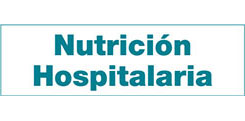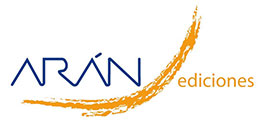Trabajo Original
Association of socioeconomic status and nine modifiable lifestyle factors on esophageal cancer risk in European and East Asian populations — Evidence from a comprehensive Mendelian randomization study
Ruizhi Ye, Fengming Zhang, Guangxian You
 Número de descargas:
2916
Número de descargas:
2916
 Número de visitas:
865
Número de visitas:
865
 Citas:
0
Citas:
0
Compártelo:
Background and aims: the intricate relationships between socioeconomic factors, modifiable lifestyle choices, and esophageal cancer risk remain uncertain. We aim to investigate the associations of socioeconomic status, modifiable lifestyle factors, and esophageal cancer risk. Methods: we employed multiple Mendelian randomization (MR) analyses, including three different MR approaches. GWAS databases from European and East Asian populations, encompassing variables such as household income, educational attainment, and the Townsend deprivation index (TDI), were analyzed. The risk of esophageal cancer was assessed using data from three distinct cohorts of European and East Asian descent (Database 1: n = 476,306; Database 2: n = 372,756; Database 3: n = 160,589). Nine modifiable lifestyle factors were incorporated in the multivariable and mediation MR analyses. Meta-analysis was employed to synthesize results across the three datasets. Results: higher household income was connected with a reduced esophageal cancer risk (odds ratio (OR) = 0.698, 95 % confidence interval (95 % CI): 0.556-0.876, p = 0.002). Body mass index (BMI) partially mediated the relationship between household income and the risk of esophageal cancer (OR = 0.914, 95 % CI: 0.841-0.992, p = 0.031, mediation ratio: 27.23 %). However, no significant evidence was found to support a direct association between educational attainment, TDI, and esophageal cancer risk. Conclusions: these findings suggest that higher household income is inversely associated with esophageal cancer risk, with BMI acting as a partial mediator of this relationship. Accordingly, targeted early screening and preventive measures for esophageal cancer should be prioritized among low-income populations, particularly those with obesity.
Palabras Clave: Socioeconomic status. Modifiable lifestyle factors. Esophageal cancer. Mendelian randomization. Mediation effect.
Artículos Relacionados:
Trabajo Original: Feasibility, safety and outcome of endoscopic gastrostomy in patients with esophageal cancer
Ana Laranjo , Mariana Brito , Gonçalo Nunes , Carla Adriana Santos , Jorge Fonseca
Trabajo Original: Basal Energy Expenditure measured by indirect calorimetry in patients with squamous cell carcinoma of the esophagus
Trabajo Original: Inequalities in the association between adherence to the Mediterranean diet and physical fitness in the young population during the COVID-19 lockdown
Javier Brazo Sayavera , Inácio Crochemore-Silva , Bruno Bizzozero Peroni , Noelia González-Gálvez , Edina Maria de Camargo , José Francisco López-Gil
Trabajo Original: Body mass index and risk of inflammatory breast disease: a Mendelian randomization study
Changlong Wei , Xiaofang Wang , Jinsheng Zeng , Gongyin Zhang
Revisión: Elemental diet preventative effects for adverse events during chemotherapy in patients with esophageal cancer - A systematic review and meta-analysis
Hao-Ning Lan , Xu-Ying Huang , Yang Ge , Guang-Yu An , Jian-Nan Yao , Hui-Yun Zhang
Trabajo Original: Causal effect of sarcopenia-related traits on the occurrence and prognosis of breast cancer - A bidirectional and multivariable Mendelian randomization study
Zhijian He , Lujia Zhu , Jie He , Xinwei Chen , Xiaoyang Li , Jian Yu
Trabajo Original: Associations between dietary intake and sarcopenia: a Mendelian randomization study
Nana Zhao , Yunfei Lu , Junjie Liu
Trabajo Original: Causal effects of vitamin D on leukemia risk: insights from two-sample Mendelian randomization analysis
Shupeng Chen , Meiling Zhang , Yao Gao , Yingjian Zeng
Trabajo Original: Higher frequency of adding salt to foods increases the risk of low bone mineral density in individuals over 60 - A Mendelian randomization study
Ying Li , Yuhan Wang , Lianying Guo , Ye Yu , Mengqi Jiang , Lili Deng , Qingyi Zhou , Lu Sun , Xu Feng , Zhuo Zhang
Trabajo Original: Causal association of childhood body mass index with risk of endometrioid endometrial cancer — A two-sample Mendelian randomization study
Yaochen Lou , Yan Du , Feng Jiang , Jun Guan
Trabajo Original: Two-sample Mendelian randomization analysis evaluates causal associations between dietary habits and rectal polyps
Lingyue Zhao , Chunsheng Cheng , Guozhen Ma , Guangju Feng , Xingguang Wang
Trabajo Original: Causal relationship between tea intake and bone mineral density at different ages ̶ A Mendelian randomization study
Ting Shen , Yining Guan , Jiaru Cai , Yizhou Jin , Yixin Jiang , Jiaying Lin , Chenxin Yan , Jiawei Sun
Carta Editor: Aleatorización mendeliana en nutrición: el desafío de la diversidad poblacional
Sergio Vladimir Flores-Carrasco , Ángel Roco Videla , Román Montaña-Ramírez
Trabajo Original: Food intake influences the incidence of cardiovascular disease by driving cardiac remodeling — Evidence from a Mendelian randomization
Bingfu Wang , Yulong Song , Yujian Fan , Zhiqiang Zhao
Trabajo Original: Specific dietary micronutrients are causally associated with arthritis subtypes - Results from the NHANES 2015-2018 and Mendelian randomization study
Feng Cheng , Yingjia Zhu , Xiaojing Zhang , Fei Xia
Artículos más populares
Revisión: Inteligencia artificial generativa ChatGPT en nutrición clínica: avances y desafíos
ChatGPT y otras herramientas de inteligencia artif...
Revisión: Suplementación con micronutrientes y sus beneficios: ¿por qué y cuándo?
Introducción: los micronutrientes participan en la...
-
Licencia creative commons: Open Access bajo la licencia Creative Commons 4.0 CC BY-NC-SA
https://creativecommons.org/licenses/by-nc-sa/4.0/legalcode




